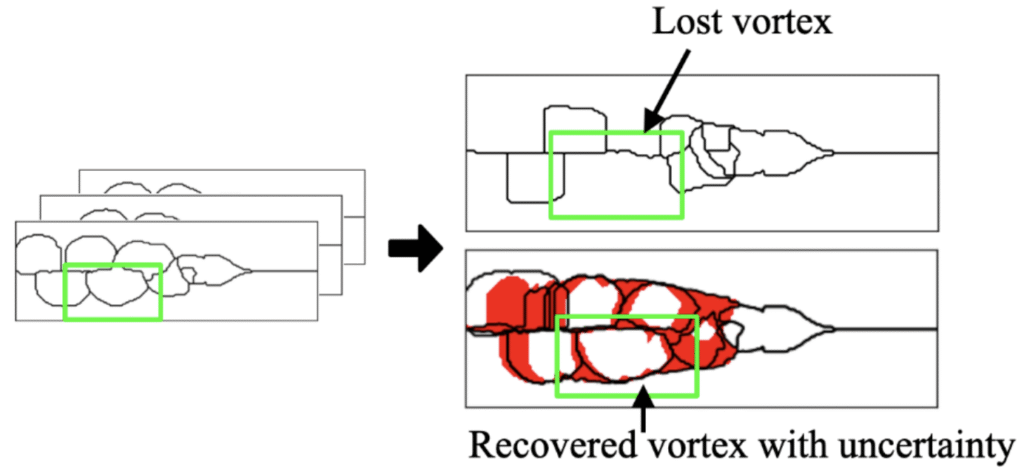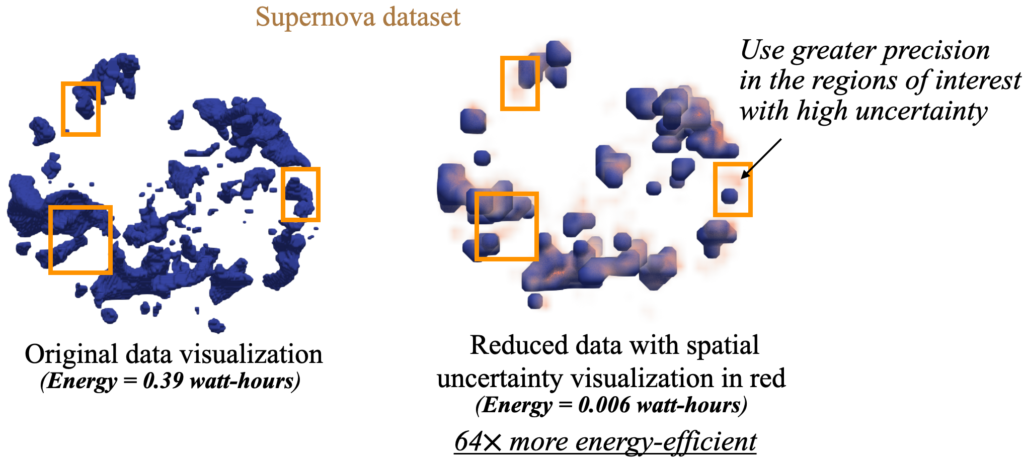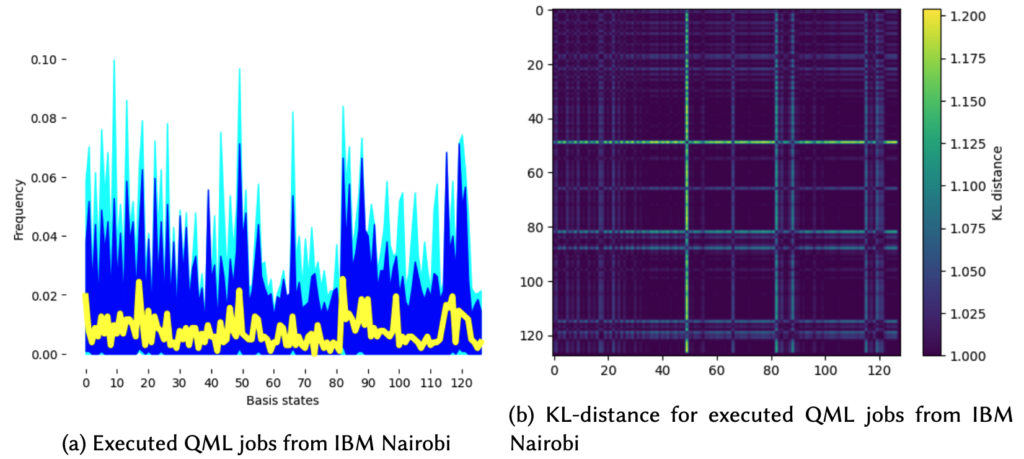 Uncertainty-Aware Inverse Feature Mapping for Reliable Scientific Discovery
Uncertainty-Aware Inverse Feature Mapping for Reliable Scientific Discovery
T. M. Athawale, D. Pugmire, C. R. Johnson, K. Moreland, P. Rosen, A. Entezari, A. Georgiadou, T. Beck
[Paper]
(In the U.S. Department of Energy's ASCR Workshop on Inverse Methods for Complex Systems under Uncertainty, Rockville, MD, 2025.)
 Uncertainty-Informed Approximate Computing for Energy-Efficient Visualization of Large Data
Uncertainty-Informed Approximate Computing for Energy-Efficient Visualization of Large Data
T. M. Athawale, D. Pugmire, C. R. Johnson, K. Moreland, P. Rosen, A. Georgiadou, T. Beck
[Paper]
(In the U.S. Department of Energy's ASCR Workshop on Energy-Efficient Computing for Science, Bethesda, MD, 2024 .)

Visualizations for Uncertainty Analysis of Quantum Application Outputs
P. Senapati, T. M. Athawale, D. Pugmire, and Q. Guan
[Paper]
(In the U.S. Department of Energy's ASCR Workshop on Basic Research Needs in Quantum Computing and Networking, Gaithersburg, MD, 2023.)

Uncertainty-Aware Scientific Data Visualization for Trusted Decision-Making
T. M. Athawale, D. Pugmire, C. R. Johnson, K. Moreland, D. Lu, J Chen, J. Kress, S. Klasky, and M. Parashar
[Paper] [Presentation] [BibTex]
(In the U.S. Department of Energy's ASCR Workshop on Visualization for Scientific Discovery, Decision-Making, & Communication, 2022 (Virtual).)
 Efficient Visualization on Complex Distributed Resources
Efficient Visualization on Complex Distributed Resources
D. Pugmire, K. Moreland, J. Kress, J. Chen, T. M. Athawale, S. Klasky, and H. Childs
[Paper] [BibTex]
(In the U.S. Department of Energy's ASCR Workshop on Visualization for Scientific Discovery, Decision-Making, & Communication, 2022 (Virtual).)
Deep brain stimulation (DBS) is an FDA-approved neurosurgical procedure for treating patients with movement disorders such as Parkinson's disease. Patient-specific computational modeling and visualization play a key role for efficient surgical and therapeutic decision-making relevant to DBS. The computational models analyze DBS post-operative brain imaging, e.g., computed tomography (CT), to understand the DBS electrode positions within the patient's brain. The DBS stimulation settings for optimal patient response depend upon a physician's knowledge regarding precise electrode positions. The finite resolution of brain imaging, however, restricts our understanding regarding precise DBS electrode positions. In our contribution, we study the problem of the quantification of positional uncertainty in the DBS electrodes caused by the finite resolution of post-operative imaging. We propose a Monte Carlo statistical framework, which takes the advantage of our analytical characterization of the DBS electrode geometry to understand the spatial uncertainty in DBS electrodes. Our statistical framework quantifies the uncertainty in two positional parameters of the DBS electrodes, namely, the longitudinal axis direction and the positions at sub-voxel levels. We interactively visualize quantified uncertainties by employing volume rendering and isosurfaces. We show that the spatial variations in the DBS electrode positions are significant for finite resolution imaging, and interactive visualization can be instrumental for efficient interpretation of the positional variations in the DBS lead.
 Uncertainty-Aware Inverse Feature Mapping for Reliable Scientific Discovery
Uncertainty-Aware Inverse Feature Mapping for Reliable Scientific Discovery Uncertainty-Informed Approximate Computing for Energy-Efficient Visualization of Large Data
Uncertainty-Informed Approximate Computing for Energy-Efficient Visualization of Large Data Efficient Visualization on Complex Distributed Resources
Efficient Visualization on Complex Distributed Resources

